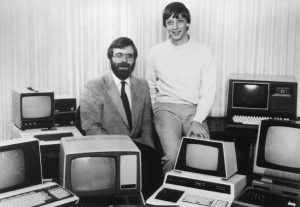It’s no secret that Andrew Tanenbaum has disposed of some shady characters that have attacked Linux with less than truthful motives. On a warm Sunday in June of 2015, he stopped by for a tour of the collection and to tell us where some of the bodies are buried.
In 2004, as the failed Longhorn OS was being purged from Redmond hard drives, Microsoft hired a D.C. firm to do a smear job on Linux, Torvalds and Open Source Software. It seems they wanted to send a message that Open Source was not all the intellectual freedom it was cracked up to be.
According to their hired gun, Torvalds had copied Linux from Andrew’s Minux. Open Source was just plain bad for the economy. Taxes and license fees built that.
In a famous Usenet discussion Tanenbaum defended Linux and Open Source. Linus Torvalds did not copy Linux from Minux. In fact he had made some mistakes with the monolithic design of the kernel that Tanenbaum said was the purest form of self invention.
Andrew told me, “the development of communications technology paralleled that of computers.” A member of the original UNIX team and frustrated licensee, he did a teaching version called Minux.
Like UNIX, the modern CPU was suggested and designed by engineers in the communications business . In 1969, Victor Poor, working on an improved control unit for the Datapoint 2200, contributed logic for the 1201 – Intel renamed the 8008.
In 1971 the Datapoint 1200 TTL chipset was faster than its single chip silicon counterparts . This posed a serious challenge to engineers designing early CPU’s. An ex-Intel employee was about to dominate the 8-bit market with an improved version of the 8080.





